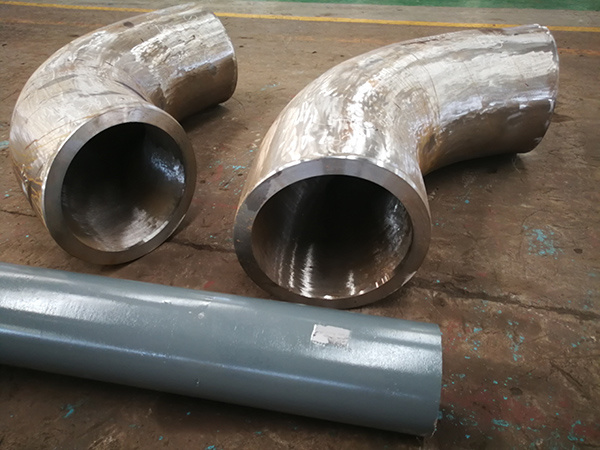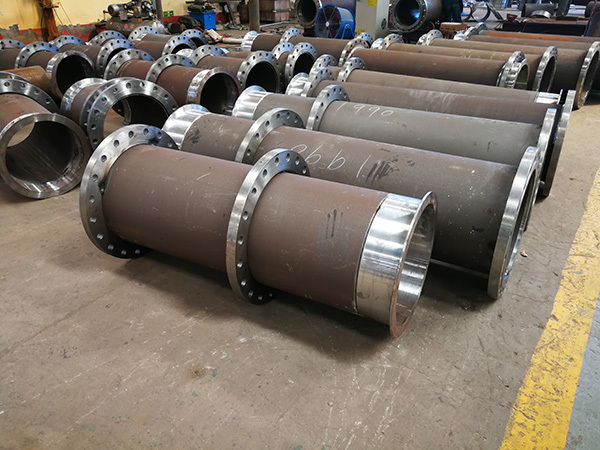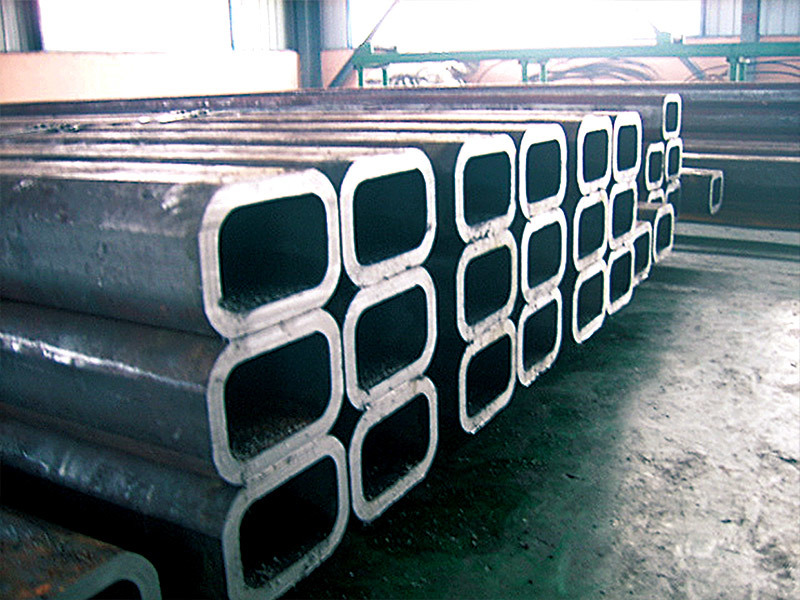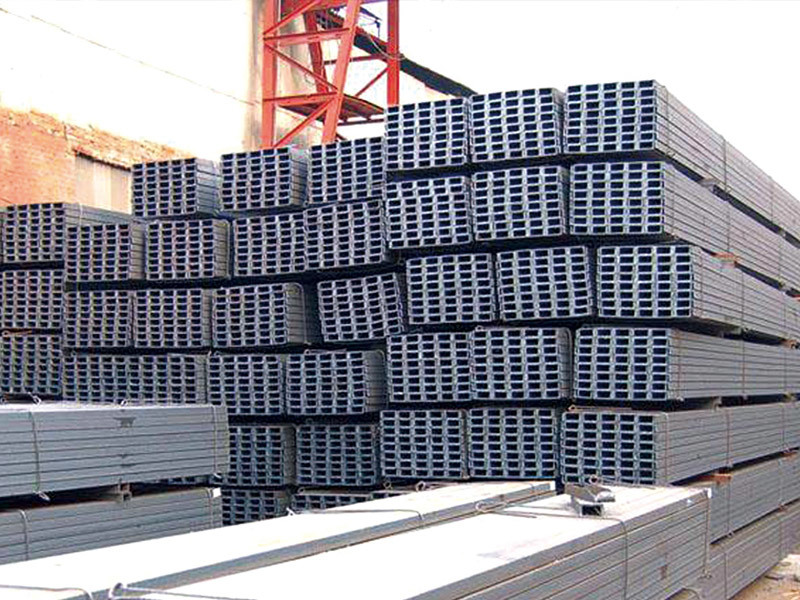1. What are the treatment methods for pipeline anticorrosion?
1. Anti-corrosion design outside the pipeline Petroleum asphalt is the oldest pipeline anti-corrosion layer, and it is used well in most dry areas. At present, epoxy coal asphalt and zinc-rich coatings have replaced petroleum asphalt as anticorrosion coatings for steel water pipelines, and epoxy coal asphalt series coatings have excellent anticorrosion performance and low prices.
2. The anti-corrosion coating on the outer wall of the pipeline is uniformly and densely coated on the surface of the derusted metal pipeline to isolate it from various corrosive media, which is one of the most basic methods for pipeline anti-corrosion. Since the 1970s, laying pipelines in harsh environments such as polar regions and oceans, and heating and transporting oil to increase the temperature of pipelines have put forward more requirements for coating performance.
3. The anti-corrosion coating on the inner wall of the pipe is used for surface treatment on the inner wall of the pipe to ensure that the coating and the pipe wall are firmly bonded. Since the 1970s, the same material has been used for the coating of the inner and outer walls of the pipe, so that the coating of the inner and outer walls of the pipe can be carried out at the same time. Before the anti-corrosion treatment of the pipeline, the surface of the pipeline substrate should be treated to remove water, oil, dirt, pollutants, rust and scale on the surface of the substrate. There are many methods of surface treatment, generally using artificial derusting, sandblasting or chemical derusting. For manual derusting, the quality standard should reach St3 level; for sand blasting or chemical derusting, the quality standard should reach Sa2.5 level, and the surface roughness of 30-50m is more suitable. Treated surfaces should be primed within 4 hours.
2. What is the role of pipeline anticorrosion?
1. Avoid the corrosion of the pipeline by soil, air, medium, etc. The current pipelines are mostly used to transport gasoline, natural gas and other substances. These substances have a very strong corrosive effect on the soil of the environment, and the pipeline can effectively prevent the environment from being affected by these substances. Pollution, and greatly improve the transport efficiency.
2. Pipeline anticorrosion can prevent leakage of natural gas, oil, etc., and has a very good protection and preventive effect on fire houses and the environment.
3. What are the precautions for pipeline anticorrosion construction?
1. During the construction of the anti-corrosion layer, the ambient temperature should be higher than 5°C, and the air humidity should be lower than 80%.
2. Thinner ratio is 5%, glass cloth pressing edge is 20-25mm, cloth head lap length is 100-150mm.
3. Voltage inspection of anti-corrosion layer: ordinary level 2000V; enhanced level 2500V; special enhanced level 3000V.
4. Inspection of anti-corrosion layer: ≯5 leaks per 10km, measured with a low-voltage audio signal leak detector.
Welded steel pipes should be subjected to mechanical performance test, flattening test and flaring test, and must meet the requirements of the standard. The steel pipe should be able to withstand a certain internal pressure. If necessary, carry out a 2.5Mpa pressure test and keep it for one minute without leakage. The method of eddy current flaw detection is allowed to replace the hydrostatic test. The eddy current flaw detection is carried out according to the standard of GB7735 "Steel tube eddy current flaw detection inspection method". The eddy current flaw detection method is to fix the probe on the frame, keep a distance of 3~5mm between the flaw detection and the weld seam, and conduct a comprehensive scan of the weld seam by the rapid movement of the steel pipe. The flaw detection signal is automatically processed and sorted by the eddy current flaw detector. To achieve the purpose of flaw detection.
After flaw detection, the welded pipe is cut off according to the specified length with a flying saw, and it is rolled off the assembly line through the turning frame. Both ends of the steel pipe should be chamfered with flat ends, printed with marks, and the finished pipes are packed in hexagonal bundles before leaving the factory.
The main processing methods of straight seam steel pipes are:
Forging steel: a pressure processing method that uses the reciprocating impact force of a forging hammer or the pressure of a press to change the blank into the shape and size we need.
Extrusion: It is a processing method for steel to place metal in a closed extrusion box and apply pressure at one end to make the metal extrude from the specified die hole to obtain a finished product with the same shape and size. It is mostly used for the production of non-ferrous metal steel .
Rolling: A pressure processing method in which the steel metal billet passes through the gap between a pair of rotating rolls (various shapes), and the cross-section of the material is reduced and the length is increased due to the compression of the rolls.
Pulling steel: It is a processing method in which the rolled metal blank (type, pipe, product, etc.) is pulled through the die hole to reduce the cross section and increase the length. Most of them are used as cold working.
1. Shoddy steel pipes are prone to folding. Folding is a variety of fold lines formed on the surface of the steel pipe, and this defect often runs through the longitudinal direction of the entire product. The reason for the folds is that due to the pursuit of high efficiency by fake and inferior manufacturers, the reduction is too large, resulting in ears, and folds will occur in the next rolling process. The folded products will crack after bending, and the strength of the steel will decrease.
2. The appearance of fake and inferior steel pipes often has pockmarks. Pockmarked surface is a defect of irregular unevenness on the surface of the steel due to severe wear of the rolling groove. Because manufacturers of fake and inferior steel pipes want to pursue profits, the groove rolling often exceeds the standard.
3. The surface of fake and inferior steel pipes is prone to scarring. There are two reasons: (1). The material of fake and inferior steel pipes is uneven and has many impurities. (2). The guides and guards of fake and inferior material manufacturers are poorly equipped and easy to stick to steel. These impurities are prone to scarring after biting the roll.
4. Cracks are easy to occur on the surface of fake and inferior materials. The reason is that its blank is adobe, and the adobe has many pores. During the cooling process, the adobe is subjected to thermal stress and cracks occur. After rolling, there are cracks.
5. False and inferior steel pipes are easy to scratch. The reason is that the manufacturers of fake and inferior steel pipes have poor equipment, which is prone to burrs and scratches on the surface of the steel. Deep scratches reduce the strength of the steel.
6. False and inferior steel pipes have no metallic luster, are light red or have a color similar to pig iron, for two reasons. 2. Its blank is adobe. 2. The rolling temperature of fake and inferior materials is not standard. Their steel temperature is measured visually, so it cannot be rolled according to the specified austenite area, and the performance of the steel will naturally fail to meet the standard.
7. The horizontal ribs of fake and inferior steel pipes are thin and low, and the phenomenon of insufficient filling often occurs. The reason is that in order to achieve a large negative tolerance, the reduction in the first few passes of the finished product is too large, the iron shape is too small, and the hole shape is not full.
8. The cross-section of fake and inferior steel pipes is elliptical. The reason is that in order to save materials, the reduction in the first two passes of the finished roll is too large. The strength of this rebar is greatly reduced, and it does not meet the standard of rebar shape.
9. The composition of high-quality steel is uniform, the tonnage of the cold shear is high, and the end face of the cutting head is smooth and neat. However, due to the poor material quality of fake and inferior materials, the end face of the cutting head often has the phenomenon of meat loss, that is, unevenness and no metallic luster. Moreover, because the products of fake and inferior material manufacturers have fewer heads, big ears will appear at the head and tail.
10. The material of fake and inferior steel pipes contains many impurities, the density of the steel is relatively small, and the size is seriously out of tolerance, so it can be weighed and checked without a vernier caliper. For example, for rebar 20, the national standard stipulates that the maximum negative tolerance is 5%, and its single theoretical weight is 120 kg when the length is 9M, and its minimum weight should be: 120X (l-5%) = 114 kg, If the actual weight of a single piece weighed is less than 114 kg, it is a counterfeit steel because its negative tolerance exceeds 5%. Generally speaking, the effect of whole phase weighing will be better, mainly considering the problem of cumulative error and probability theory.
11. The inner diameter of fake and inferior steel pipes fluctuates greatly because of; 1. The steel temperature is unstable and there are negative and positive surfaces. 2. The composition of steel is uneven. 3. Due to poor equipment and low foundation strength, the rolling mill has a large bounce. There will be large changes within the same week, and such steel bars are prone to fracture due to uneven stress.
12. The trademark and printing of high-quality tubes are relatively standardized.
13. For large threads with a steel pipe diameter of 16 or more, the distance between the two trademarks is more than 1M.
14. The longitudinal reinforcement of fake and inferior steel rebar is often wavy.
15. Manufacturers of fake and inferior steel pipes pack loosely because they don't have driving cars. The sides are oval.
Weld defects: The weld defects of stainless steel flanges are serious. If manual mechanical grinding is used to make up for it, the resulting grinding marks will cause uneven surfaces and affect the appearance; uneven passivation of grinding and polishing: manual grinding and polishing After pickling and passivation treatment, it is difficult to achieve a uniform and consistent treatment effect for workpieces with large areas, and it is impossible to obtain an ideal uniform surface. It also has the disadvantages of working hours and high cost of auxiliary materials;
Scratches are difficult to remove: overall pickling passivation, chemical corrosion or electrochemical corrosion will occur in the presence of corrosive media to rust, and carbon steel and spatters adhered to the surface of stainless steel due to scratches and welding spatters cannot be removed. other impurities;
How to solve the problem of stainless steel flange processing?
1. Select blanking. After completion, enter the next process. Different stainless steel workpieces enter the corresponding process according to the processing requirements;
2. When bending, first of all, according to the size on the drawing, the thickness of the stainless steel 304 seamless steel pipe material should be used to determine the tool and sipe used for bending. Avoiding the deformation caused by the collision between the product and the tool is the key to the selection of the upper mold (at the same time In a product, different types of upper molds may be used), and the selection of the lower mold is determined according to the thickness of the plate.
3. In order to weld firmly, put bumps on the workpiece to be welded, so that the bumps can be in uniform contact with the flat plate before energized welding, so as to ensure consistent heating of each point, and at the same time determine the welding position, which needs to be welded. Good preloading time, pressure holding time, maintenance time, rest time, to ensure that the workpiece can be spot welded firmly.










